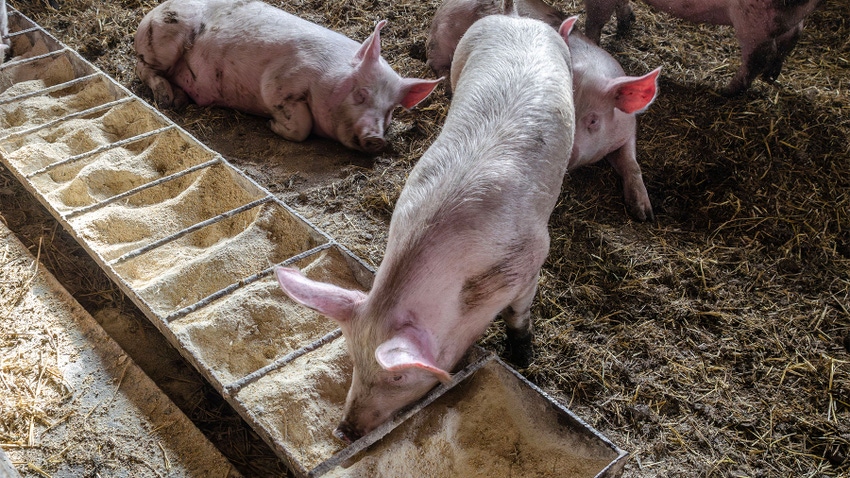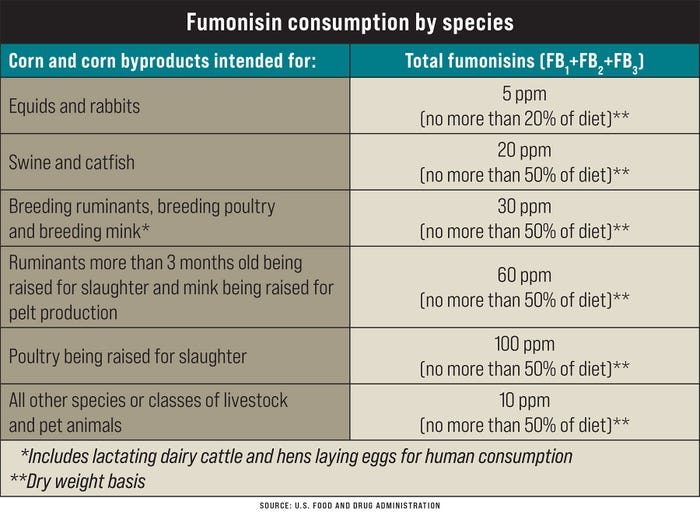
When abortions or stillbirths happen in sow barns, the first call is likely to the veterinarian. As both the vet and farmer wait for test results, the animals continue to eat. And that could be the root of the problem.
This year, hog producers are calling Marcia Shannon searching for answers. The University of Missouri Extension state swine specialist is pointing them toward the mycotoxin fumonisin as the culprit.
Fumonisin is produced by fusarium molds in corn and typically occurs when hot, dry weather is followed by periods of high humidity, which was the case in much of Missouri in 2023.
Elevated fumonisin levels are showing up in feed across the state and causing problems in the swine industry, particularly for farmers with gestation and lactation barns.
“Those I work with who lost pigs found it in their feed,” Shannon says.
Just how much is too much toxin
The Missouri Department of Agriculture Bureau of Feed and Seed surveys corn every fall. Last year, the department collected 122 samples, and 83 tested positive for fumonisin.
While the majority of the samples fall in the less-than-9.9-parts-per-million range, Shannon hears from hog producers finding up to 15 ppm. For perspective, the U.S. Food and Drug Administration allows for 20 ppm in no more than 50% of the swine diet.
But every batch of feed is different because feed mills have different corn sources, Shannon explains, and some may contain higher levels than others. Producers may have received a batch of feed in January or February without a fumonisin problem, but their batch in March popped too high.
Reports into Shannon’s office were from the central and northwest region, but the problem is not regional. “It is across the state, just spotty,” she adds.
While testing is done on-farm and at the feed mill, fumonisin can still grow on corn harvested and stored since September. Shannon warns farmers to take immediate steps to safeguard their animals.
Assess hogs for symptoms
Fumonisin does not only cause piglet deaths in the sow barn.
According to Texas A&M Veterinary Diagnostic Labs, grower pigs that consume fumonisin B1 can also develop porcine pulmonary edema or PPE.
This presents when the pig first decreases its feed intake, then four to seven days later shows signs of respiratory difficulty. In extreme cases, it results in death.
While Shannon nor the Missouri Department of Agriculture have heard of PPE in Missouri, pork producers need to be vigilant about determining fumonisin levels in feed.
Action items for hog producers
If mixing your own feed, test current corn for mycotoxin levels, particularly fumonisins. Send samples through Shannon, an Extension office or a veterinary diagnostic lab for analysis.
Add mycotoxin binder products to feed if fumonisin levels are detected. Shannon points to DSM's Mycofix Select with FUMzyme as one option that works. Follow label instructions for inclusion rates based on specific mycotoxin types and levels.
Contact a feed mill to request mycotoxin testing reports for animal feed batches. Review reports to ensure adequate testing and acceptable levels are present.
“Make sure you get your feed tested whether you think you have a problem or not,” Shannon says. “Just knowing that there's problems out there, get tested and then use the binding products. They are kind of expensive, but at the same time, if it prevents abortions, it pays for itself.”
More than pigs
The Missouri Department of Agriculture notes that higher levels of fumonisin in corn do not only affect swine.
Horses and other equids, as well as rabbits, are most sensitive, although all livestock can experience effects.
Consumption of corn contaminated with fumonisin causes “moldy corn poisoning” or leukoencephalomalacia, which is a softening of the brain’s white matter, according to Texas A&M Veterinary Medical Diagnostic Labs.
Animals that consume elevated levels of fumonisin may demonstrate neurological symptoms such as confusion, circling, incoordination, agitation and facial twitching.
The table below shows the sensitivity to fumonisin by species from the FDA.

If symptoms occur, contact your veterinarian.
Read more about:
SwineAbout the Author(s)
You May Also Like






